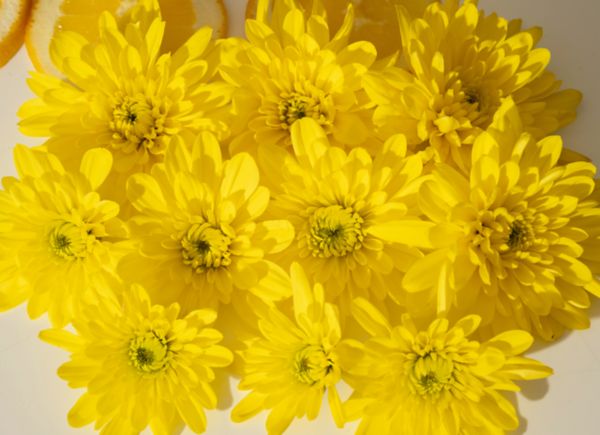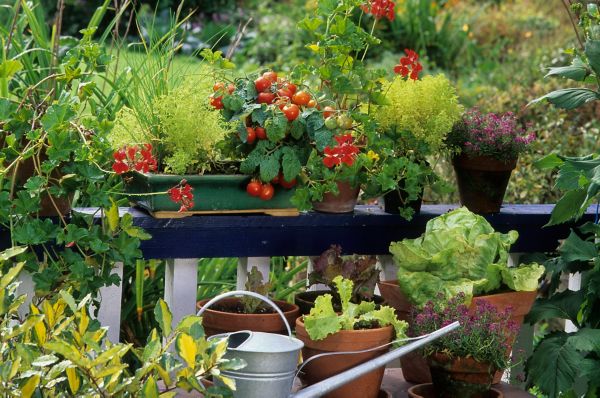How to Grow Pumpkins
Authored by Leah Chester-Davis
Pumpkin is a popular ingredient in baked goods such as pies, breads, and muffins. It is used in soups, stews, risotto, salads, and pasta. Even pumpkin seeds are a healthy, nutritious snack.
When crisp, cool days of fall arrive and calendar pages turn to October, pumpkins take center stage. Whether they are the traditional large, round, orange shapes or the white or various shades of green types that are becoming more popular, the appearance of pumpkins make it official: fall has arrived.
Pumpkins are in the cucurbit family, which includes squash, melons, gourds, and cucumbers. They are favored as fall decorations through Thanksgiving. It’s the lead-up to Halloween, however, that makes them especially popular when families visit pumpkin patches for the perfect carving pumpkin to transform into a jack-o’-lantern. But these large, fleshy, orbs have so much more to offer.
Their bold orange color is a clue that they are chock full of vitamins A, various B vitamins, vitamin C, several minerals, and fiber. They are rich in beta-carotene, an antioxidant that is important to helping the body fight disease.
About pumpkin
| Botanical name: | Cucurbita pepo for most jack-o’-lanterns, pie pumpkins |
| Common name: | Pumpkin |
| Plant type: | Annual |
| Size: | Numerous shapes, sizes, colors |
| Sun exposure: | Full sun |
| Soil type: | Fertile |
| Soil pH: | 6.0 to 6.8 |
| Hardiness zones: | 3 to 9 |
| Average first frost: | Varies by region |
| Average last frost: | Varies by region |
| Container friendly: | Yes, use at least 10- to 20-gallon sizes |
| Beginner friendly: | Yes |
Growing
Pumpkins like full sun and fertile, loose, well-drained soil that is slightly acidic, 6.0 to 6.8 pH. Before planting, get your soil tested and follow recommendations. Soil test kits are available from county Extension centers and are free or a nominal charge. Before planting, work the soil so that it is weed-free and well-drained. Amend with organic matter.
This tender vegetable grows on vines along the ground and needs plenty of room for its sprawling nature. Among the types of pumpkins are vining, semi-bush, miniature, and bush varieties. If you have limited space, consider a bush variety, which has restricted vining.
Consider your favored use, and purchase seeds accordingly. Pumpkins for jack-o’-lanterns may have bland, stringy flesh. Pie pumpkins typically have smaller, sweeter fruit. If growing giant pumpkins for competitions such as local county fairs, start with the right type, such as Cucurbita maxima. Garden catalogs or local garden centers will likely have seeds.
Among the types of pumpkins are vining, semi-bush, miniature, and bush varieties. If you have limited space, consider a bush variety, which has restricted vining.
Planting
Pumpkins can be started from seed and transplanted, or they can be planted directly into the garden. If in a northern climate, you may want to start with transplants to give them a jumpstart in the growing season.
Plant after danger of frost has passed and the soil has warmed as they will not germinate in cold soils. For a late September or early October harvest, plant around late May in northern climates and mid- to late-June or into July in Southern regions. The best bet is to use the maturity date on the seed packet and follow its guidelines. Maturity dates typically range from 90 to 120 days.
Plant seeds 1 inch deep in slightly raised hills, which means you pile up or mound the soil a few inches. Plant four to five seeds per mound. As the seeds germinate and grow into seedlings, thin them down to the healthiest two to three plants per mound.
Mulch around plants to reduce weed growth and conserve water. Utah State Extension recommends applying organic mulch such as straw after the soil has warmed to 75 degrees F. Plastic mulches warm the soil and may allow earlier planting.
Hand pull weeds to keep in check. Be careful using a garden hoe around the plants to avoid hitting the vine’s roots, which grow close to the soil surface.
Water lightly and frequently after planting until plants become established. As they grow, they will need about 2 inches of water per week in absence of rainfall. When fruit begins to grow, it’s essential to provide a thorough soaking rather than light applications. Continue irrigation on a regular basis. Water at the base of the plant or use drip or soaker hoses to avoid getting the leaves wet, which can increase chances of disease.
For vining types, plants need plenty of room. Space hills about 8 to 10 feet apart on all sides.
For semi-bush varieties, allow about 4 feet between hills and 8 feet between rows.
For bush varieties, allow about 3 feet between hills and 6 feet between rows.
For miniature varieties, allow about 2 feet between hills and 8 feet between rows.
To grow giant pumpkins, C. maxima, Mississippi State Extension recommends planting about 120 days before the show date with these directions: Give vines plenty of space to grow. Prune off the first few female flowers, then let only a few set to baseball size. Finally, choose the best one or two and remove all others. Remember to turn the developing pumpkins once per week to obtain a well-shaped product.
Fertilizing
Follow soil test recommendations. In the absence of a soil test, Mississippi State Extension recommends applying 4 to 6 pounds of a complete fertilizer like 8-8-8 or 8-24-24 per 100 feet of row two weeks before planting, or use an organic fertilizer for edibles and follow label directions.
- Do not use “Weed and Feed” type fertilizers on vegetables.
- After the vines develop runners, Utah State Extension recommends sidedressing with a nitrogen fertilizer such as 21-0-0; use 1 to 2 tablespoons per mound. Incorporate the fertilizer about 6 inches away from the plant and avoid getting it on any leaves or vines to avoid burning them. Or use an organic fertilizer; follow label directions.
Controlling Pests, Diseases, and Other Problems
Keep weeds in check to reduce problems with insects and diseases. Use grass clippings, pine straw, bark products to mulch, or black plastic.
- Squash bugs and cucumber beetles feed on leaves, flowers, and fruit. Squash vine borers can kill vines. Striped cucumber beetles can also be vectors of bacterial wilt. Spider mites also can be a problem. Mississippi State Extension recommends permethrin, bifenthrin, or natural products such as oils, soaps, and pyrethrins. Follow label directions.
- Pumpkins are pollinated by bees. Protect these important insects by limiting insecticide use. If insecticides are necessary, apply only in late afternoon or early evening. That is the time of day that the blossoms close and bee activity is at a minimum.
- Powdery mildew, downy mildew, fusarium wilt, phytophthora blight, and bacterial fruit spot can affect them. Fungicides may help. Remove any debris from the garden and employ crop rotation techniques. Avoid planting pumpkins where you have grown other cucurbits.
- Purchase powdery mildew-resistant varieties.
Harvesting and Storing
Harvest in the fall, typically late September or early October when the pumpkin has developed its full color and size, and before the first heavy frost. By harvest time, the stem and the rind should have begun to harden.
Use pruning shears or a sharp knife to cut pumpkins from the vines. Remember to leave 3- to 4-inches of stem. Do not carry the pumpkin by the stem to avoid breaking it, which can damage the fruit. Handle the pumpkin carefully to avoid bruising it.
Leave them outside in dry, sunny weather to allow them to harden off. If the weather is cold or rainy, store inside in a warm (about 80 degrees F), humid, well-ventilated area for about two weeks.
Storing
After they are hardened off, store in a cool, dry place, around 50 to 55 degrees F.
To reduce mold and decay, Maryland Extension recommends washing pumpkins with a weak bleach solution of 1 tablespoon bleach mixed with 16 ounces of water. After washing with bleach, rinse the pumpkin with water, wipe dry, and store in a cool, dry place that has good air circulation.
Pumpkins can be dried in a dehydrator. They will need to be peeled and sliced into pieces. Pumpkins can be cooked and frozen, or they can be canned.
Store in a cool, dry place, around 50 to 55 degrees F.
Expert Tips
- Check with your local garden center or county Extension office for best varieties for your region.
- Some recent All-America Selections are Wee-B-Little, Pumpkin Pepitas F1, Pumpkin Hijinks F1, and Pumpkin Blue Prince F1.
- Avoid use of insecticides when bees are out and about. If insecticides are necessary, use in the late evening and use organic options when possible.
Frequently asked questions
Why do my vines have poor fruit set?
This may be due to inadequate pollination or it may due to weather. Cold, rainy, and cloudy weather can decrease pollination. Inadequate pollination can result in not only poor fruit set but also small and misshapen fruit. Inadequate watering or irrigation, especially during the blossom and fruit set periods, can also result in reduced yields and fruit sizes.
What is the best variety for my region?
Your local garden center or county Extension office typically can provide information on suggested varieties for your locale. Recommendations may vary region to region.
How do I keep powdery mildew off my plants?
Powdery mildew is a white, powdery mold that often appears on the stems and bottom sides of leaves. Your best bet is to plant resistant varieties. Otherwise, fungicides may be needed.
Can I eat the pumpkin flesh and pumpkin seeds from my jack-o’-lantern pumpkin?
Yes, if it hasn’t been carved and sitting outside for days, you can use your pumpkin for cooking. Wash it thoroughly then cut in half. Use a large spoon to scrape the seeds, pulp, and fleshy strings out. Place the seeds in a colander and run under cold water to remove the pulp and strings. Use your hands as needed to separate the seeds from the pulp and rinse the seeds and drain. Spread them on an oiled baking sheet and roast about 30 minutes in a 300-degree F oven. Season with salt or other seasoning. To cook the pumpkin, Nevada Extension recommends cutting the pumpkin in chunks, cooking until soft in boiling water, in a microwave or in an oven. Drain. Remove pulp from the rind and mash. Use within 3 to 4 days or freeze the pumpkin puree in zip top bags or freezer containers. Use in recipes calling for canned pumpkin.





